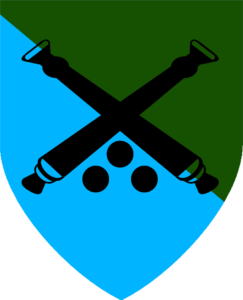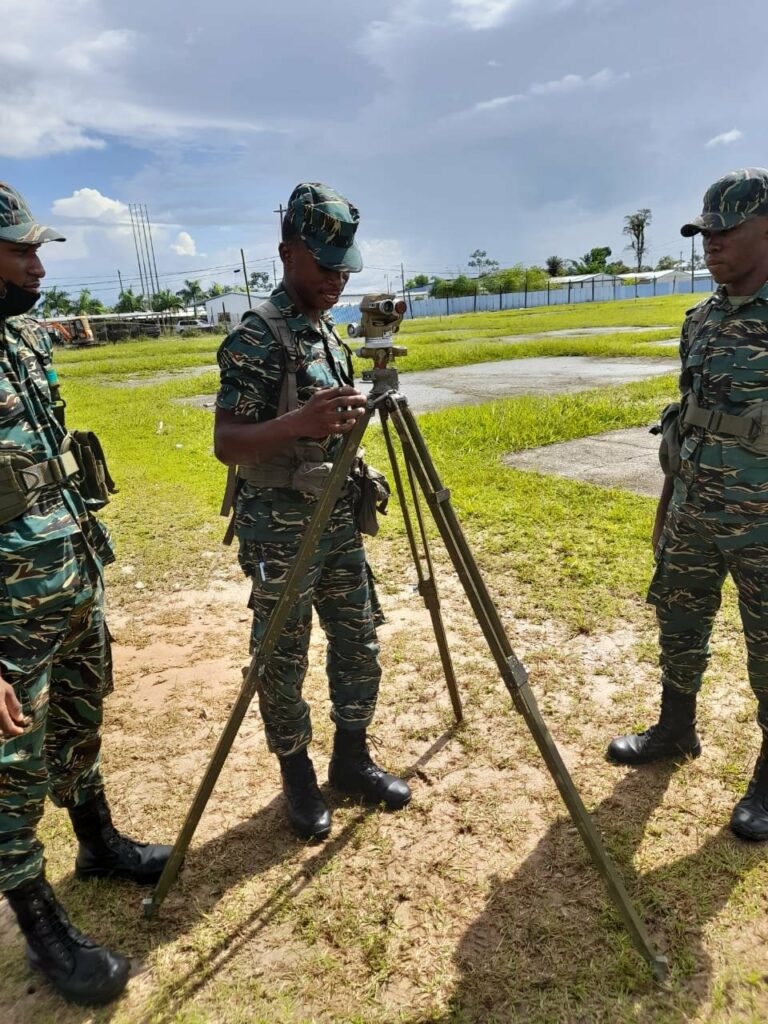
21 Artillery Company
The 21 Artillery Company is headquartered at BC(s) Timehri with operational responsibility for Essequibo. The company is also deployed at Location Mabaruma.

HISTORY OF 21 ARTILLERY COMPANY
The Mortar Platoon, commanded by Lt Hinds who was sent to England in September 1967, came into existence in November 1967 with the purchase of nine (9) 81mm Israelis Sultan Mortars and Ammunitions and a strength of 1 & 31.
The first time these weapons were in combat was in 1968 when they were used on the relief of Ankoko.
These weapons were once again deployed in the Rupununi in January 1969 in support of the troops’ advance from Menari into Lethem to quell the (Insurrection).
The first time the weapons were actually fired in combat was on 19th August 1969 during OPERATION CLIMAX in the New River Triangle. This operation resulted in the removal of Dutch soldiers from Guyana’s territory.
In April 1970 Lt Hinds was posted out of the Mortar Platoon which by then had expanded to a Coy. Capt I C Fraser who had previously done the Mortar Platoon Commanders Course in England assumed command.
The unit then became Support Weapons Command in August 1976 when sixty-one (61) soldiers of the GDF who were training in Cuba on three classes of Artillery weapons, Mortars, Cannons and Anti-Aircraft Guns had returned.
In October 1976 the Unit was transferred to Camp Groomes on the Soesdyke Linden Highway which was named after CPL Peter Groomes who died under mysterious circumstances while training in Cuba.
The Unit at this time comprised HQ Group, A Group (122mm Cannon), B Group (81mm, 82mm, 120mm Mortars), and C Group (7.92 Mac, 12.7mm and 14.5mm AA). However, in 1978, additional soldiers of Support Weapons Command were sent to the DPRK for further training. They were trained on the 76mm & 122mm Cannons also the 14.5mm Anti Aircraft Guns.
In 1979 Maj C Fraser handed over command of the Unit to Capt F Griffith and incidentally, that year on September 10th the Unit was renamed 1 Support Weapons Battalion.
In May 1984 a group of ten (10) foreign instructors arrived and conducted four months of training from June 6th to September 26th. This course was conducted at Camp Groomes. Seventeen (17) Officers and 194 Other Ranks were trained on the employment of the 76mm Cannon, 107 mm, Rocket Launcher, and the 82mm and 120mm Mortars.
In 1980, twelve (12) 122mm Cannons and ammunition arrived from DPRK.
In 1983, the first shipment of 76mm Cannons, 107 mm Rocket Launchers, aquatic, Anti-personnel and Anti-Tank Mines, Grenades and ammunition for the 76mm Cannon and 107 mm Rocket Launcher arrived at Linden
After the formation of the ground forces group in mid-1983, there was a need for supporting arms in that group. Thus, 12 Coy (formerly B Coy) which operated the 82mm and 120mm Mortars was transferred to form the nucleus of 141 Support Coy of the GFG in January 1984.
On January 1st 1984, as a result of change within the GDF establishment, the Unit was renamed 1 Artillery Battalion.
On January 1st 1984 as a result of change within the GDF establishment, the Unit was renamed 1 Artillery Battalion.
On January 4th 1984, 1 Arty Bn received 65 new soldiers from BRC 8305. These, along with a contingent of NCO from 11 Coy, joined the new 12 Coy and were responsible for the 76mm Cannons.
In 1985 an agreement was reached between the British and Guyana governments and as a result, twelve (12) 40 mm Mortars and ammunition were acquired.
Additionally, the Unit acquired 24 fireworks tubes and bombs in 1986 from the DPRK.
In 1986 another group of foreign Artillery instructors visited Guyana and conducted a course from 1986 October to 1987 June. Fifty (50) students were trained in Advanced Artillery Commander, Maintenance Personnel and Anti-Aircraft. The training was conducted on the 82mm Recoilless gun, 82mm and 120mm Mortars, 76mm and 122mm Cannons, 107mm Rocket Launcher and the 14.5mm Anti-Aircraft Gun.
In 1987, two (2) Korean Instructors conducted a one-week course for ranks of the Unit on the Fireworks Weapons.
The first course organized to grade the Artillerymen was done in 1987. Since then, grading courses, as well as developmental training, have become an annual activity within the Unit.
In March 1987, 112 Coy and 12 Coy merged to form one company operating the 76mm and 122mm Cannons.
In November 1993, following the explosion at Camp Grooms on the Soesdyke Linden Highway, the company was relocated to Base Camp Stephenson and renamed 21 Artillery Company still under the command of then Major T Benn.
At present, 21 Artillery Company is headquartered at BC(s) Timehri with operational responsibility for Essequibo. The company is also deployed at Location Mabaruma.



